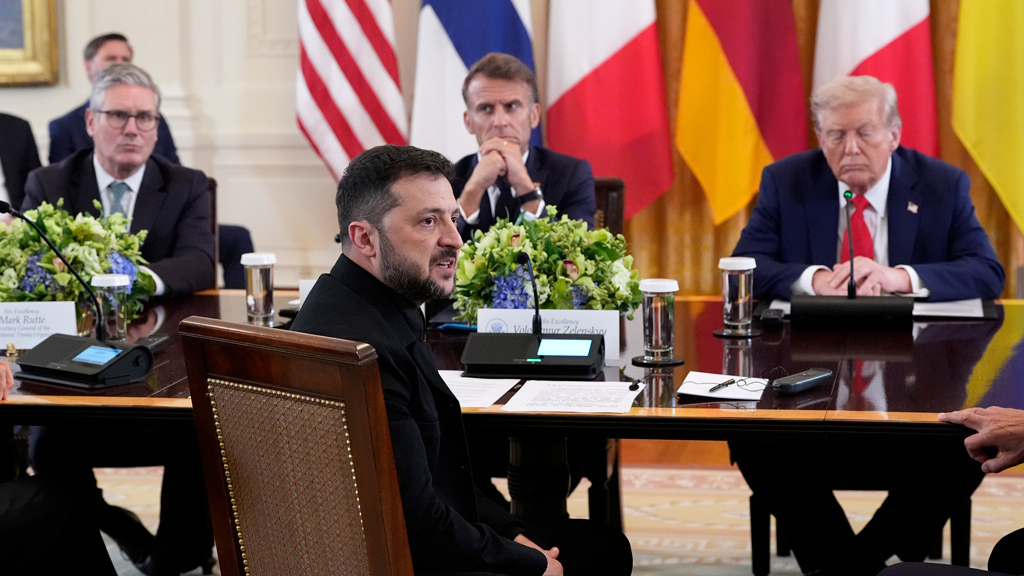Trump and Zelensky in Washington: The Return of “Hardline Support” Policy

On October 17, 2025, U.S. President Donald Trump and Ukrainian President Volodymyr Zelensky met at the White House. This was their second meeting in the past two months – and arguably the most important one, not only for bilateral relations but also for understanding the future of the West’s overall policy toward the war in Ukraine.
Trump once again demonstrated that his approach to foreign policy fundamentally differs from Joe Biden’s. While the previous administration based its support for Ukraine on moral responsibility and the defense of “democratic values”, the current White House prefers the language of deals and balance.
Support for Kyiv has not stopped, but it is increasingly being tied to conditions. Behind closed doors, Washington insists on the “rationalization” of military aid: fewer blank checks, more accountability, logistics, and oversight. It’s a pragmatic approach where humanitarian rhetoric gives way to political calculation.
For the American electorate, Trump is projecting the image of a leader who doesn’t waste resources but negotiates even with allies on “tough terms”. On the eve of the 2026 presidential campaign, this image is vital – support for Ukraine in the U.S. remains significant, but no longer unconditional.
For Zelensky, the visit to Washington was a necessary step to maintain trust and attention from his key partner. Today, every diplomatic contact for Kyiv is equivalent to a new supply line to the front. The Ukrainian president arrived with specific requests: additional air defense systems and long-range strike capabilities – both crucial for sustaining the country’s defenses. However, in response, he received not promises but a formula: “The U.S. is ready to help — but on mutually acceptable terms”.
This caution from Washington reflects not indifference but fatigue. The U.S. wants to see in Kyiv not just an ally, but a partner capable of implementing reforms, curbing corruption, and managing resources effectively. It is diplomacy of survival – where maintaining support requires constant reminders that Ukraine remains the West’s strategic shield.
For Russia, the Trump-Zelensky meeting was an unpleasant but expected development. After months of uncertainty in U.S.-Ukraine relations, the Kremlin had clearly counted on weakening coordination between them. That did not happen.
Formally, the U.S. did not announce new arms deliveries, yet the very fact of the meeting in the White House shows that the West still sees Ukraine as part of its security architecture, not a temporary project.
Moscow will likely interpret this as a signal to accelerate its own operations before Western military aid to Kyiv regains momentum. This could lead to a new wave of escalation as early as this autumn – particularly in the southern and eastern sectors.
The most important aspect of this meeting is not the specific decisions, but the tone. Trump is not abandoning Ukraine, but he is no longer turning it into a symbol. He brings the issue back into the realm of realism: support must have a price, a purpose, and a timeframe.
For Europe, this is also a challenge. The EU must now decide whether it can compensate for a potential decrease in U.S. involvement – or whether it will once again remain dependent on Washington’s decisions.
For Ukraine, it is a reminder that to preserve international interest, it must demonstrate not only heroism but also strategic resilience.
The Trump-Zelensky meeting was neither a breakthrough nor a failure. It was a diplomatic pause before a regrouping, during which Washington seeks balance between domestic skepticism and external necessity.
Thus, Kyiv is being reminded that Western support is not infinite – every new commitment must now be earned with arguments and results. At the same time, Moscow has been warned that despite turbulence in Western capitals, the political foundation of support for Ukraine remains strong. In other words, on October 17 in Washington, they did not decide the fate of the war, but they did determine what kind of war it will be: long, calculated, and controlled.
Expert Group CCBS
 Latest news
Latest news Latest news
Latest newsRussia and Syria: A New Chapter in Relations After the Coup
16.Oct.2025
NATO and EU Join Forces to Build a “Drone Wall”
15.Oct.2025
Trump: New bonds of friendship to join Armenia to Azerbaijan
14.Oct.2025
UK to lift its arms embargo on Armenia, Azerbaijan
14.Oct.2025
Russia Opens New Criminal Case Against Opposition Figure Khodorkovsky
14.Oct.2025
Expert analysis by Tigran Khzmalyan: If Pashinyan wins again, Armenia will fall completely under Russia’s influence
14.Oct.2025
The Kremlin Warns the West of Dangerous Escalation: U.S. Plans to Supply Tomahawk Missiles to Ukraine
12.Oct.2025
Moscow Admits Guilt for Downing Azerbaijani Plane: Putin and Aliyev Show “Mutual Understanding of Authoritarian Allies”
10.Oct.2025
Kazakhstan to Fully Transition to Digital Governance: Tokayev Announces Creation of New Ministry
10.Oct.2025
State Duma Denounces Plutonium Disposal Agreement with the United States
09.Oct.2025

 20 Oct 2025
20 Oct 2025








